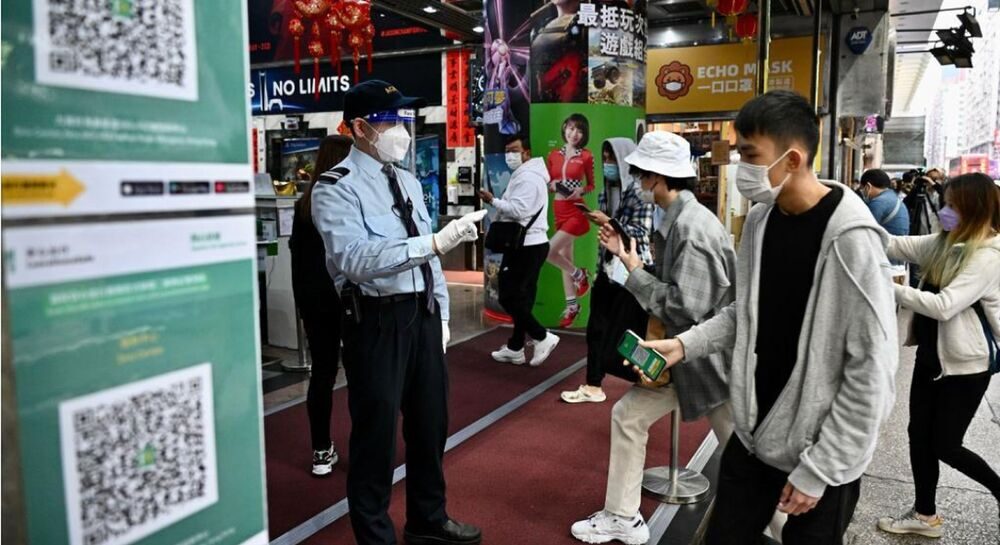
At a Legislative Council panel meeting on Monday, Sit said the bureau is currently improving the LeaveHomeSafe app.
Previously, the app required users to hold their devices up to a QR code to record their visit. After the update is rolled out, the app will be able to automatically check-in when users enter or exit premises that require a digital record - such as shopping malls and restaurants.
In response to lawmaker Peter Koon Ho-ming's question as to whether real-name registration will be required on the LeaveHomeSafe app, Sit said the "vaccine pass" to launch on February 24 will serve a similar function, since vaccination records are registered under citizens' real names.
"Such a policy would enable effective contact tracing based on citizens' real names, and a real-name tracking-enabled LeaveHomeSafe app would therefore be redundant," Sit said.
The government's vaccine passport will come into effect on February 24, and all individuals over 12 years of age must have had at least one dose of the Covid-19 vaccine before ending restaurants, shopping malls, and supermarkets.
On the other hand, Sit also said that the city's highly controversial smart lamp posts, an integral part of the government's "smart city" initiative, are under reconstruction, thanks to recent political reforms.
"Although many of our smart lamp posts were destroyed in riots, the enactment of the National Security Law and the perfected electoral system have brought stability back to Hong Kong, allowing us to quickly rebuild our smart city," Sit said.
The smart lamp posts are equipped with Bluetooth beacons, Radio Frequency Identification (RFID) tags, QR-code tags, surveillance cameras capable of recording at high resolutions, and computers used for image processing, but authorities have previously said that some of these features are not activated.



Reader Comments
....but authorities have previously said that some of these features are not activated.Phew....
So there you are folks...
Just theatrical props....nothing more!
Phew....
I feel so "free".......looking at the house I bought but wont live in, with the nice car on its drive that will not be driven by me....I like window shopping.
Is that me over there? Oh hahaha its just a cardboard cut out of me....haha I wish I was that lucky....
:-(
The upgrade to our city was not on the news due to this terrible Covid taking center stage. Which also brought a frightening toilet paper shortage we were all worried about. So most to all people were unaware of these towers being installed.
Hopefully they will make life easier for us. We wont need QR codes.